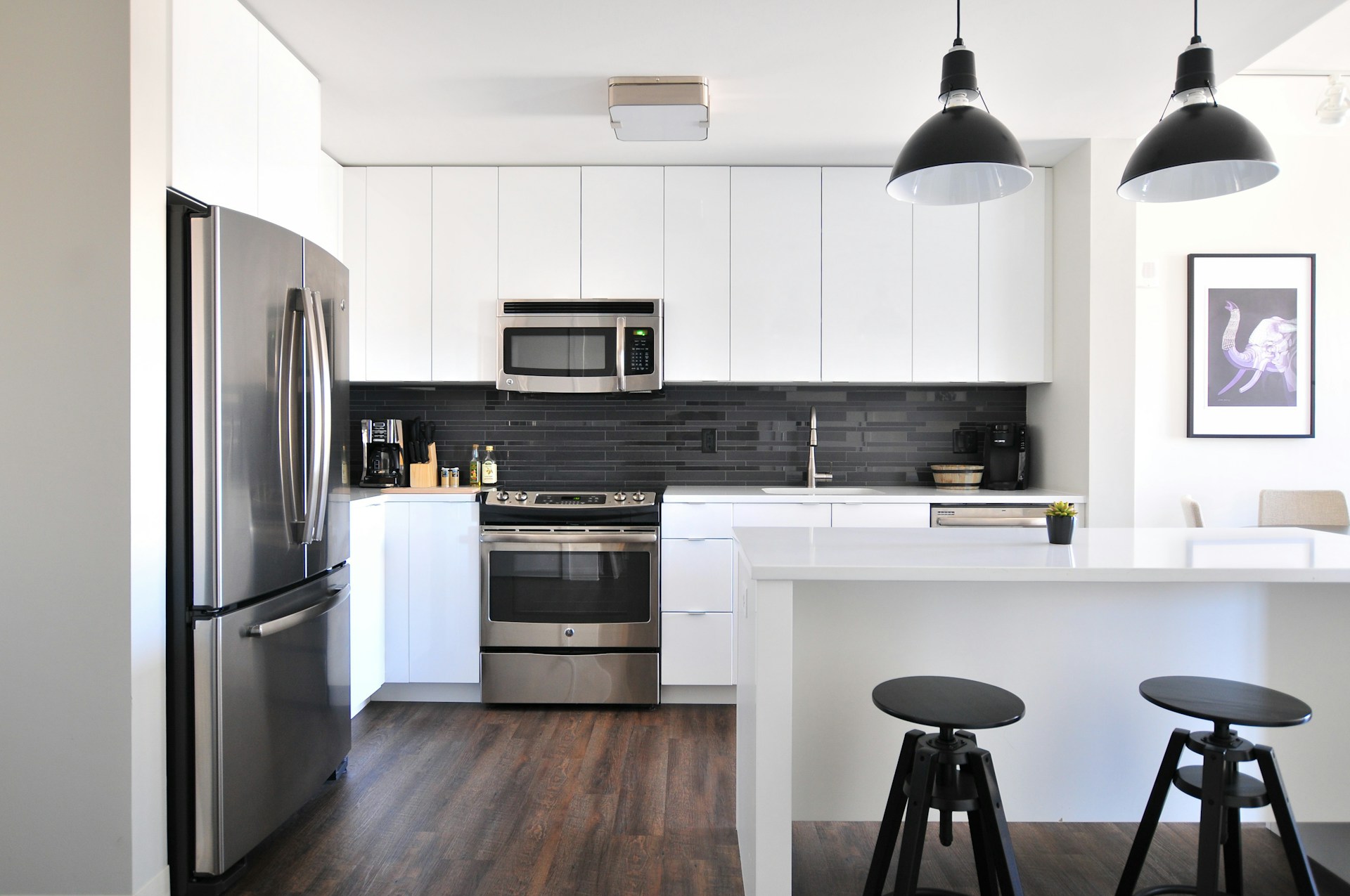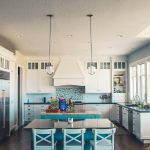Choosing the right flooring can significantly impact your kitchen's air quality, especially for those with allergies. Certain materials attract dust, mold, and allergens, making it essential to opt for hypoallergenic options. From bamboo to cork, discover the top allergy-safe flooring choices that not only enhance your kitchen's aesthetic but also promote a healthier living environment. Transform your space into a sanctuary for you and your loved ones, free from the burdens of allergens.
Understanding Allergens in Flooring
When considering flooring options, it's crucial to acknowledge the presence of allergens in flooring materials. Common allergens include dust mites, pet dander, and mould, which can thrive in certain types of flooring, particularly carpets. These allergens can significantly impact indoor air quality, exacerbating allergy symptoms for sensitive individuals.
Also read : Transform Your Kitchen: Design Tips for Promoting a Healthy Eating Lifestyle
Different flooring materials contribute to indoor air quality in varying ways. Carpets, for instance, tend to trap allergens, making them less ideal for those with sensitivities. On the other hand, hard surfaces like tile, vinyl, or hardwood are generally considered allergy-safe materials as they do not harbour allergens as easily and are easier to clean.
Choosing the right flooring is essential for maintaining a healthy indoor environment, especially for allergy sufferers. Opting for allergy-safe materials can reduce the concentration of allergens in a home, thereby improving indoor air quality. Additionally, regular maintenance, such as vacuuming with a HEPA filter and damp mopping, can further minimise allergen presence.
Also read : Transform Your Kitchen: Design Tips for Promoting a Healthy Eating Lifestyle
In summary, understanding the relationship between flooring materials and allergens is key to creating a comfortable and healthy living space. Prioritising allergy-safe materials can make a significant difference in the well-being of those affected by allergies.
Top Allergy-Safe Flooring Options
When selecting allergy-safe flooring, it's important to consider various hypoallergenic flooring options. These flooring types are designed to minimise allergen accumulation, making them ideal for sensitive individuals.
Hardwood Flooring
Hardwood flooring is an excellent choice for those with allergies. Its smooth surface prevents allergens from being trapped, unlike carpets. Regular sweeping and damp mopping are sufficient to keep it clean, reducing allergen presence. Compared to other flooring types, hardwood is durable and long-lasting, though it may require refinishing over time to maintain its appearance.
Tile Flooring
Tile flooring is renowned for its allergen resistance. Made from materials like ceramic or porcelain, tiles do not harbour allergens and are easy to clean with regular mopping. They are also highly durable, making them suitable for high-traffic areas. While the initial cost may be higher, their longevity and low maintenance make them a cost-effective choice in the long run.
Vinyl and Linoleum Flooring
Vinyl and linoleum flooring offer allergy-friendly features due to their non-porous surfaces. They are simple to clean, requiring only regular sweeping and mopping. Additionally, these materials are often eco-friendly, with linoleum being biodegradable and vinyl available in sustainable options. Their affordability and ease of installation further add to their appeal.
Pros and Cons of Allergy-Safe Flooring
Choosing allergy-safe flooring offers several advantages, but it's important to weigh the pros and cons before making a decision. Understanding the pros and cons of flooring options can help you select the best material for your needs.
Advantages of allergy-friendly materials include:
- Improved indoor air quality: These materials, such as hardwood and tile, resist trapping allergens like dust mites and pet dander, reducing allergy symptoms.
- Ease of maintenance: Hard surfaces are generally easier to clean, requiring simple sweeping and mopping to maintain a healthy environment.
- Durability: Many allergy-safe options, like tile and hardwood, are long-lasting, providing good value over time.
However, there are potential drawbacks to consider:
- Cost: Some allergy-safe materials, such as hardwood and tile, can be more expensive initially compared to other flooring types.
- Comfort: Hard surfaces might not offer the same level of comfort underfoot as softer materials like carpet.
In the long term, the health and comfort benefits of allergy-friendly flooring can outweigh these drawbacks, offering a cleaner and more comfortable living space for sensitive individuals. By carefully considering the flooring comparisons, you can make an informed choice that best suits your lifestyle and health needs.
Maintenance of Allergy-Safe Flooring
Proper flooring maintenance is essential to ensure that allergy-safe flooring continues to provide a healthy environment. Regular cleaning helps in effective allergen control and prolongs the life of your flooring.
Best Practices for Cleaning Allergy-Friendly Flooring
To maintain your allergy-safe flooring, it is crucial to follow specific cleaning tips. For hard surfaces like hardwood, tile, or vinyl, daily sweeping or vacuuming with a machine equipped with a HEPA filter is recommended. This helps in capturing dust and allergens effectively. Following up with a damp mop once a week can further reduce allergen buildup.
Recommended Products for Safe Cleaning
Choosing the right cleaning products is vital. Opt for non-toxic, hypoallergenic cleaners that are free from harsh chemicals and fragrances. Products with natural ingredients are often safer for both the flooring and the inhabitants of the home. Avoid using excessive water, especially on hardwood, to prevent damage.
Frequency of Maintenance to Minimize Allergens
The frequency of maintenance plays a significant role in allergen control. High-traffic areas might require more frequent cleaning, while less-used spaces can be maintained weekly. Establishing a consistent cleaning routine not only keeps allergens at bay but also maintains the appearance and longevity of your flooring.
Budgeting for Allergy-Safe Flooring
When considering flooring costs, it's essential to evaluate the expenses associated with allergy-safe materials. While options like hardwood and tile may have higher upfront costs, they offer durability and long-term savings through improved health outcomes. Typically, hardwood flooring ranges from £7 to £12 per square foot, while tile can vary between £5 and £10 per square foot.
For those seeking budget-friendly options, vinyl and linoleum present affordable alternatives. These materials generally cost between £2 and £5 per square foot, making them accessible choices for many households. Despite their lower price, they still provide effective allergen resistance and ease of maintenance.
Financing flooring choices can also be an option to explore. Many retailers offer financing plans that allow you to spread the cost over time, reducing the immediate financial burden. This can be particularly beneficial when opting for higher-end allergy-safe materials that promise long-term benefits.
Ultimately, investing in allergy-safe flooring can lead to significant savings in health-related expenses by reducing allergy symptoms and improving indoor air quality. By carefully assessing your budget and prioritising long-term health benefits, you can make informed decisions that align with both your financial and health needs.
Expert Recommendations and Product Suggestions
Choosing the right flooring for allergy sufferers involves considering expert flooring recommendations and product reviews. Flooring experts often highlight hardwood and tile as top choices due to their non-porous surfaces, making them less likely to trap allergens. Experts suggest opting for products with smooth finishes to further minimise allergen accumulation.
When it comes to popular flooring brands, several stand out for their allergy-safe options. Brands like Armstrong, Mohawk, and Shaw offer a range of products specifically designed to reduce allergen presence. Armstrong's vinyl flooring is praised for its durability and ease of maintenance, while Mohawk's hardwood options are noted for their eco-friendly production processes. Shaw's tile flooring is well-regarded for its variety of styles and long-lasting quality.
User reviews and ratings can be invaluable in guiding purchasing decisions. Many consumers have shared positive experiences with these brands, highlighting their effectiveness in reducing allergy symptoms and improving indoor air quality. By considering both expert insights and user feedback, you can select the best flooring that aligns with your health needs and aesthetic preferences.
Visual Aids and Resources
Understanding the various flooring options can be challenging, especially when considering allergenic properties. Visual aids play a crucial role in simplifying this process by providing clear and concise information. Flooring infographics are particularly effective, offering side-by-side visual comparisons of different materials, highlighting their allergenic potential and other key features.
Infographics can visually represent how materials like hardwood, tile, and vinyl compare in terms of allergen resistance and maintenance needs. These informative resources are invaluable for those who prefer a more visual approach to decision-making. By presenting complex data in an easily digestible format, they help individuals quickly identify the best flooring options for their needs.
For those seeking further information, various resources are available online and in print. These resources provide detailed analyses and expert insights, assisting in making informed choices. They often include guides, articles, and reviews that delve deeper into the pros and cons of each flooring type. Utilising these informative resources can significantly aid in narrowing down choices and ensuring a flooring selection that aligns with both health and aesthetic preferences.






